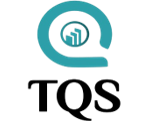
Internal Audit
nternal audit is a crucial function within an organization that helps to provide independent and objective assurance on the effectiveness of an organization’s risk management, internal controls, and governance processes. It is a key tool for organizations to assess and improve their operations, protect their assets, and achieve their objectives.
Internal audit helps to identify risks and opportunities for improvement by evaluating the organization’s processes, systems, and controls. The internal audit function is typically led by a Chief Audit Executive (CAE), who reports directly to the organization’s board of directors or audit committee.

- Improved Internal Controls: Internal audit helps to evaluate and improve an organization’s internal controls by identifying weaknesses and recommending improvements.
- Risk Management: Internal audit helps to identify and manage risks that can impact the organization’s ability to achieve its objectives.
- Compliance: Internal audit helps to ensure that an organization is compliant with laws, regulations, and industry standards.
Internal Audit Certification and Qualifications
Internal auditors are typically certified professionals with specialized training and expertise in the field of internal audit. Some of the most common certifications include the Certified Internal Auditor (CIA), Certified Information Systems Auditor (CISA), and Certified Fraud Examiner (CFE). These certifications require significant training and experience and demonstrate a commitment to the highest standards of professionalism and ethics.
Internal Audit Process
The internal audit process typically involves several steps, including planning, fieldwork, reporting, and follow-up. During the planning phase, the internal audit team identifies the objectives and scope of the audit and develops an audit plan. The fieldwork phase involves collecting and analyzing data, testing internal controls, and evaluating risks. The reporting phase involves presenting the audit findings to management and making recommendations for improvement. The follow-up phase involves monitoring the implementation of the recommendations and verifying that the improvements have been made.
